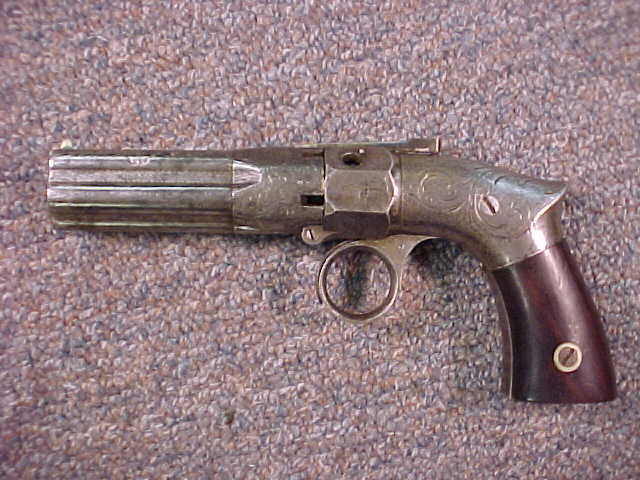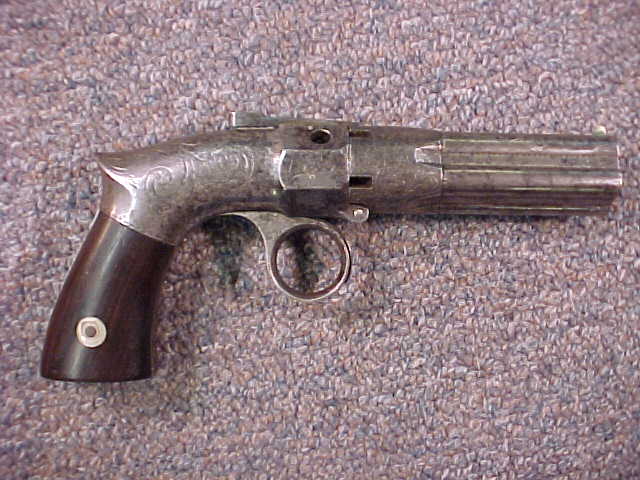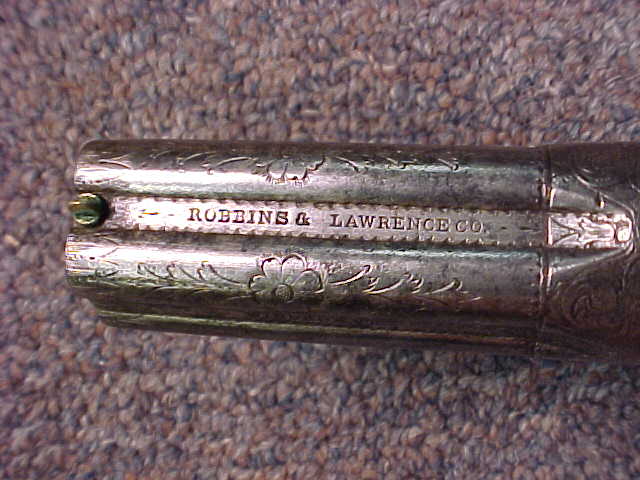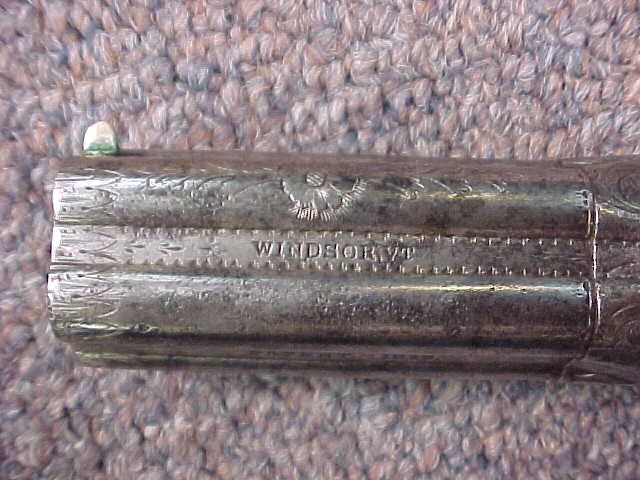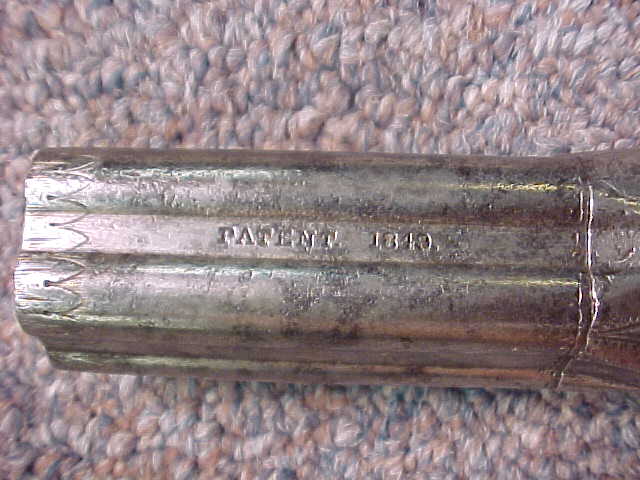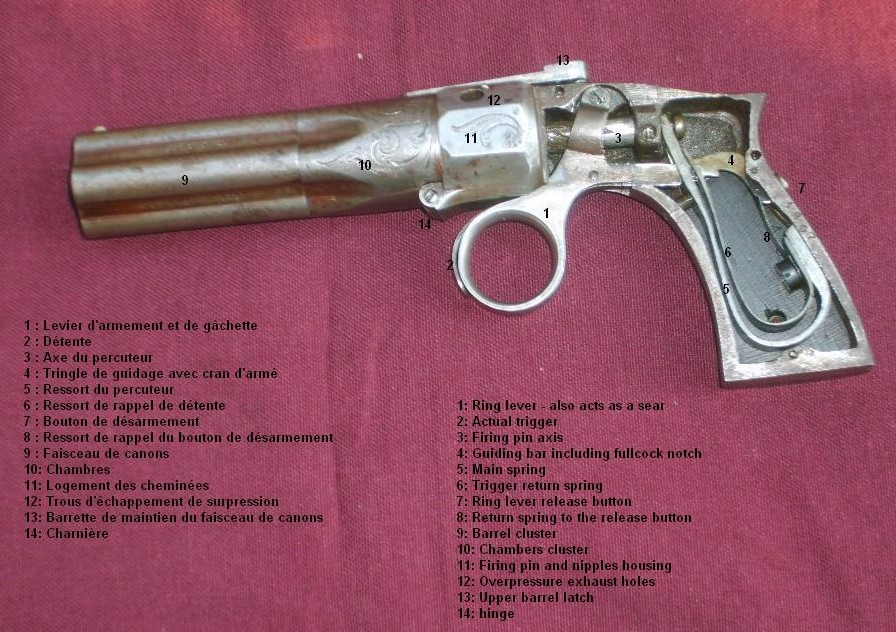
Robbins & Lawrence
THE ROBBINS&LAWRENCE PEPPERBOX - HOW IT IS MADE AND HOW IT WORKS
This small pocket weapon, patented in 1849 by Samuel Robbins and Richard Lawrence of Windsor, Vermont, is very interesting for its conception and the way it works.
The inventors, two less known American gunmakers, realized a very reliable and well-made pocket weapon that became very popular (abt 7.000 made between 1851 and 1854) but was rapidly pushed away by the massive invasion of Colt revolvers, which in these years were at the top of their success.
General description
The standard model featured an iron frame engraved with relatively simple volutes, and was available as a 5-shot in the calibres .28 or .31. Some specimens are known in larger calibres and having a brass frame, but these are extremely scarce. The gun presented in this article is in the .28 calibre.
This is a percussion gun on which the nipples are totally hidden into the frame. The nipples are integral with the rear of the chambers and cannot be removed.
The standard models feature a "ring trigger", which in fact is a cocking lever. The actual trigger is the curvy piece of metal that is visible ahead of the ring. Some specimens were issued with conventional triggers, but they are also very scarce.
The barrel cluster has five rifled barrels and can be fluted or ribbed. Barrels are always browned, while the rest of the gun is blued. There are some minor variations in the way the cluster is hinged to the frame.
The cluster is in two parts and can also be opened downwards. It is hinged at the bottom of the frame and held in place by a latch at the top, which also features a rather primitive rear sight in de form of a notch cut into the top of the latch. Our specimen has the fluted barrel cluster.
The grip has always a knuckle that provides much better prehension, and plain dark walnut plates held in place by a transverse screw and two circular escutcheons.
Some variations are also possible, such as chequered grips, different wood sort, mother-of-pearl or ivory.
The barrel cluster does not turn during firing. This weapon is equipped with a rotating firing pin.
When the gun is closed and ready for use, the nipples and firing pin are completely hidden. The forward part of the frame has an octagonal shaped housing with quite thick walls (part of the frame with two holes in the upper area - see picture 1). The firing pin rotates and moves forward and rearward inside the housing, which is closed by the rear face of the chambers that includes the integral nipples. The two holes on top of the housing allow air to get in and also act as an exhaust for a possible gas overpressure into the housing (pictures 7 and 12).
Loading
The barrel cluster has two separate parts. The forward part is the 5 actual rifled barrels, while the rear part is the chambers. The forepart is mounted on a central axis and held in place by a central screw (pictures 4 to 6).
To load the gun, the forepart of the cluster is unscrewed and pulled forward along the central axis. This exposes the muzzle of the chambers, allowing for a quick loading and seating of the balls without using any ramrod. Combustible cartridges can also be loaded the same way.
Once the chambers loaded, the forepart is screwed back in place. The threads are made so that the barrels always come into the right position.
After loading of the chambers, the barrel cluster is opened downwards by pressing the latch at the top of the gun, which exposes the nipples for capping.
The pepperbox is now ready for use.
Cocking and firing
Once the gun loaded and closed, the shooter pulls back the ring lever until it clicks and stays in position. During this motion, the actual curvy trigger comes a little downwards but does not move rearwards. Squeezing the trigger fires the gun.
The system ensures a maximum safety, for no unwanted firing is possible as long as the ring lever has not been pulled back into the cocked position (pictures 1 and 2).
A round button protrudes out of the rear grip strap. By pressing the button while retaining the ring lever with his finger, the user can uncock the firing pin and bring it back into the resting position without having to fire the gun. That ingenious system has no influence at all on a normal use of the gun (picture 3)
Internal mechanism
Pictures 9 and 10 show the internal lock mechanism. However the working is simple, this mechanism is relatively complex and has several complicated parts which were difficult to manufacture in those days, especially the main spring.
The cocking ring lever 1 pushes the main spring 5 and the trigger return spring 6 rearwards until they engage the notch cut in the bar 4. In the same movement, the head of the main spring pulls the firing pin axis, which is also forced to turn 1/5 of a turn counter clockwise by the curvy notches cut into its sides.
When the trigger 2 is squeezed, the rear part of it pushes the bar 4 upwards, disengaging the spring. The spring pushes the firing pin forward quite violently.
When the trigger is released, it is brought back in position by its return spring 6.
Pressing the rear button 7 also moves the bar 4 upwards, disengaging the main spring and allowing the user to bring it back into the resting position.
The main spring is the most important part of the lock, as it also acts as trigger lever and sear. Breaking that spring would render the gun totally useless.
A sophisticated pepperbox destined to more aristocratic clients, the Robbins&Lawrence is a well made and reliable weapon for personal defence.
Although its small calibre does not compare to the power of a military revolver and despite the lack of accuracy common to all pepperboxes, it is a good and reliable pocket weapon for short range personal defence, and that's what it is intended for.
Its relative scarcity makes it a very interesting piece of the American Frontier history for today's collectors.
Marcel

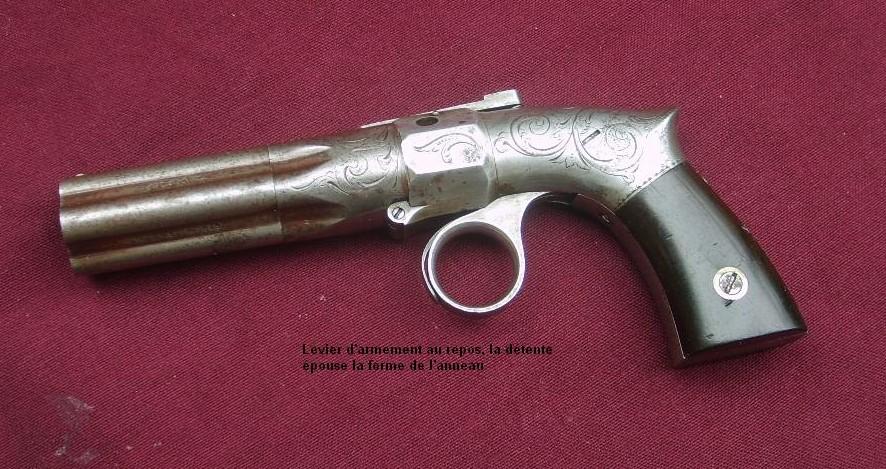
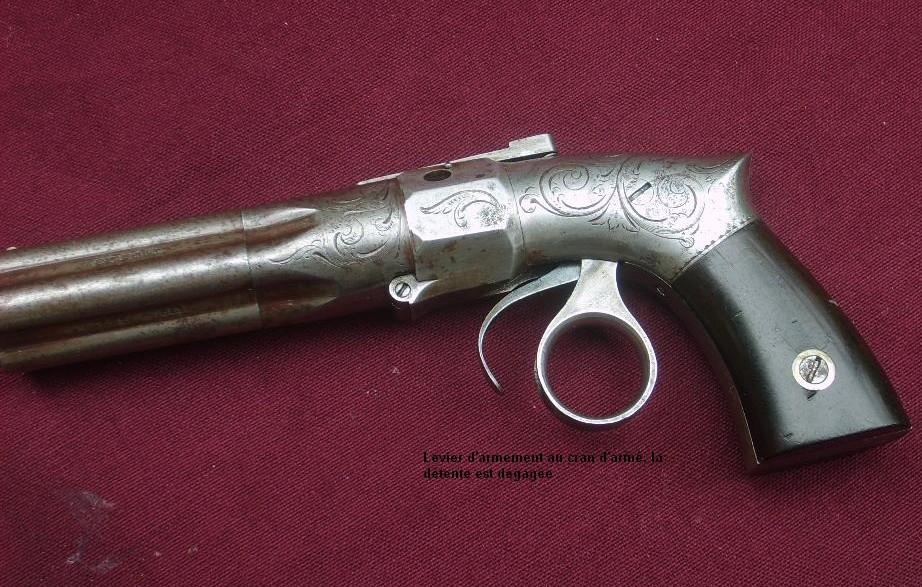
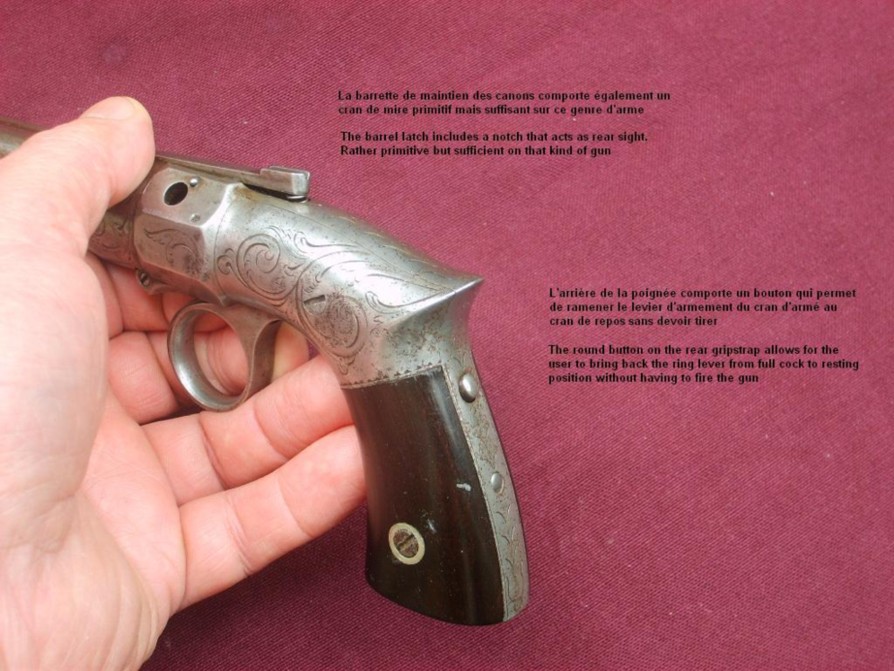
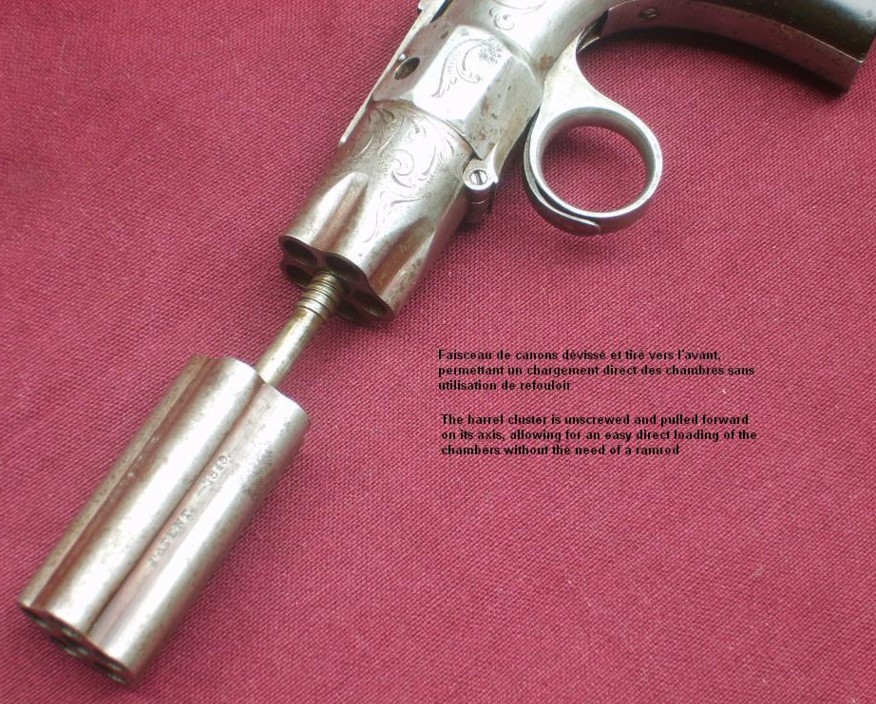
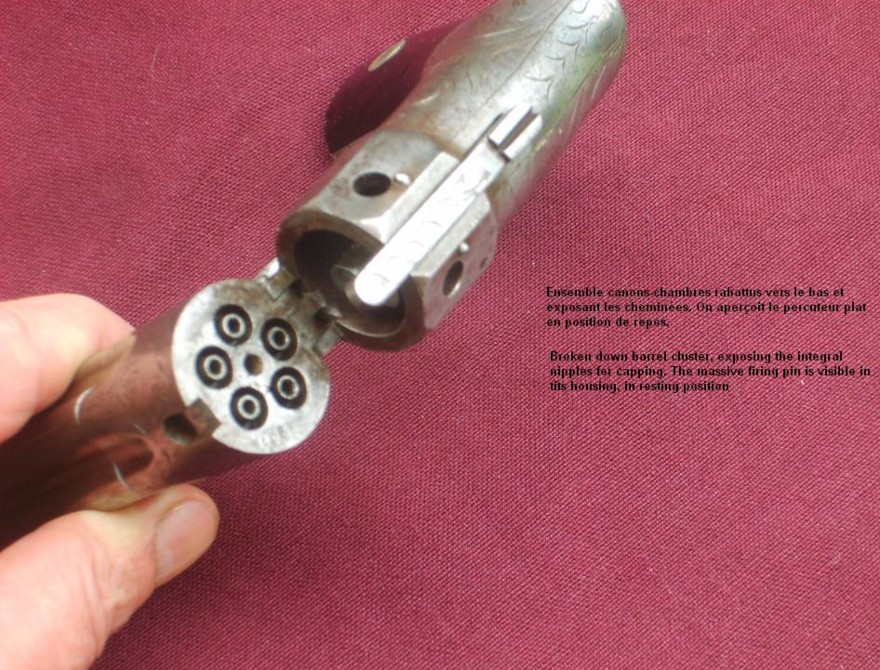
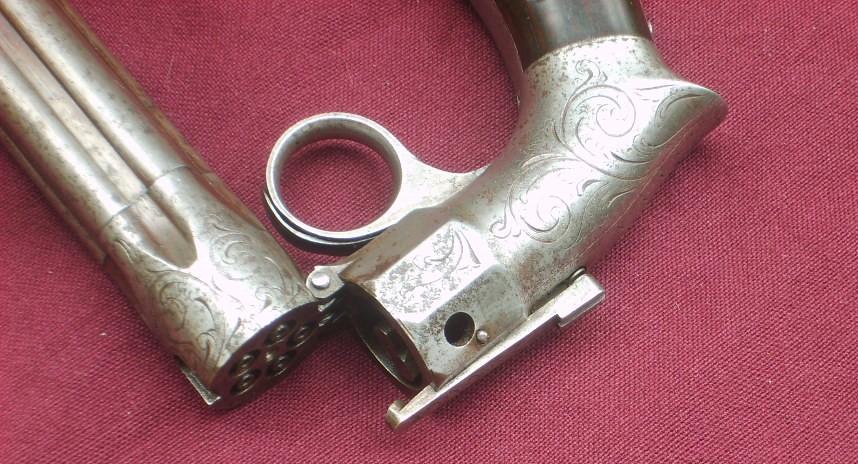
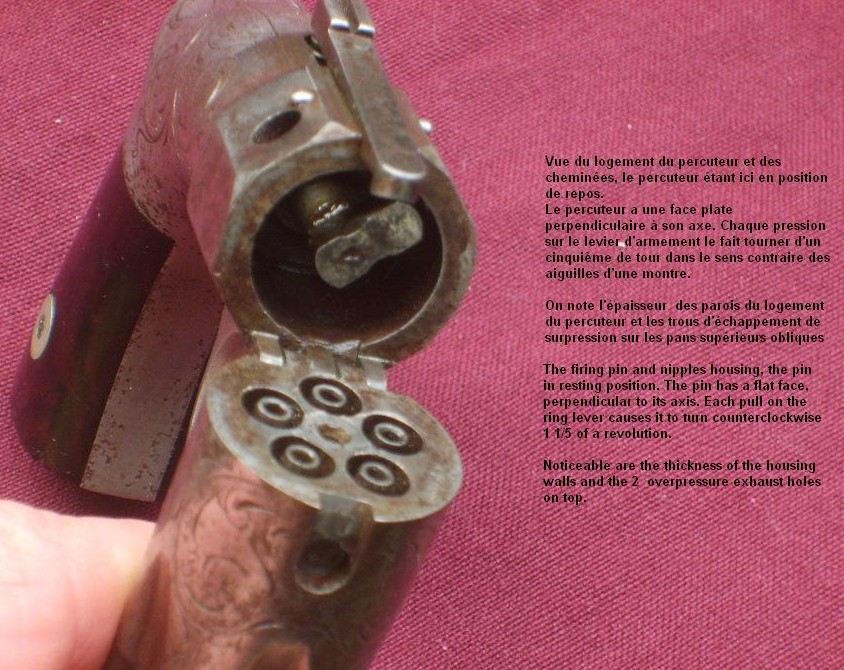
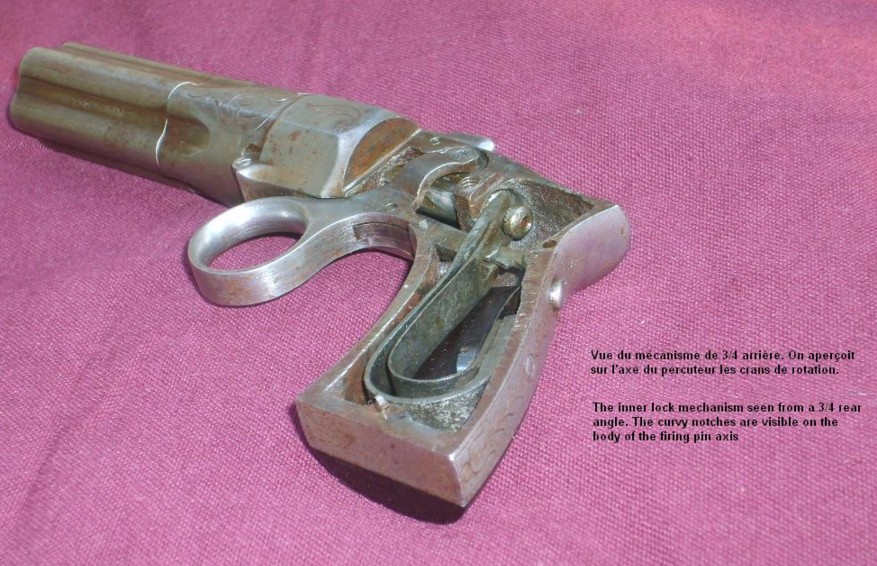
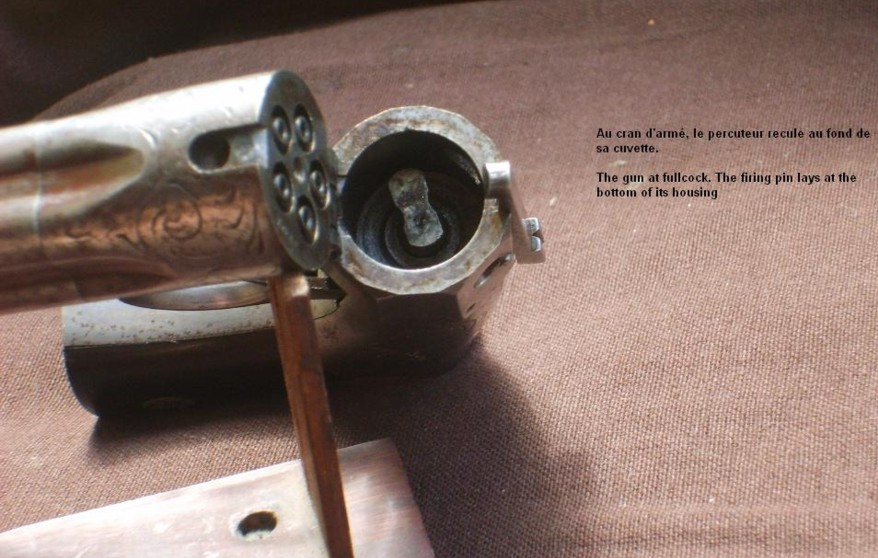
Robbins & Lawrence
Robbins & Lawrence, Windsor, Vermont, Concealed Hammer Pepperbox Pistol, with Fluted Barrel.
Circa 1851
Serial no. 3327; .31 caliber, 5 shot pepperbox barrel cluster of 3 5/16 inch length, marked on barrel rib with maker name, adjacent rib with address, and adjacent rib with 1849 and PATENT.; scroll and border and leaf engraved barrel breech, frame and grip straps; blued. Varnished rosewood grips.
Many thanks to "GREG MARTIN AUCTION" for the photos.
